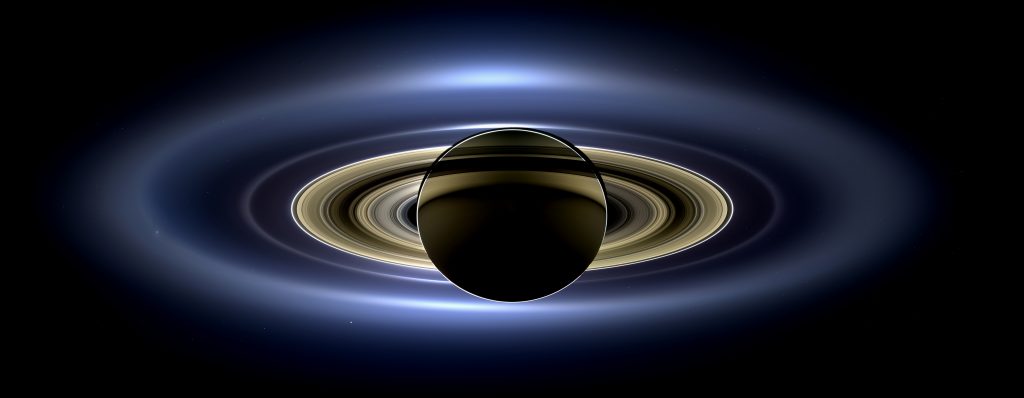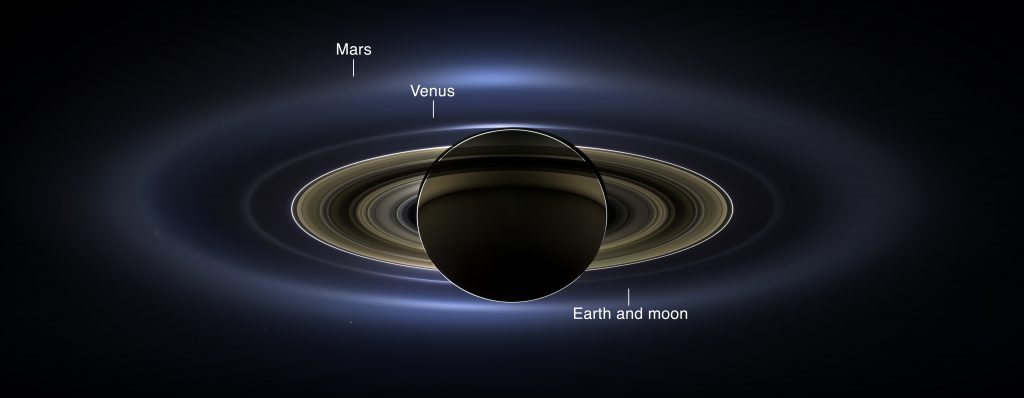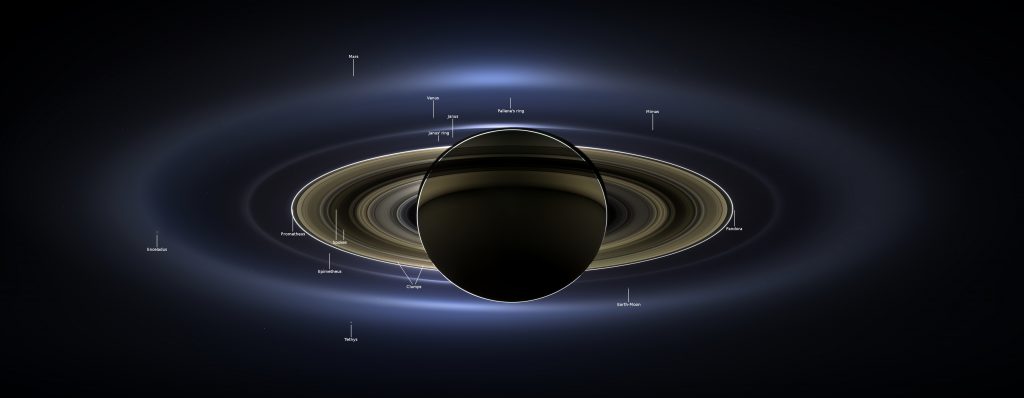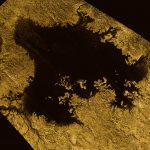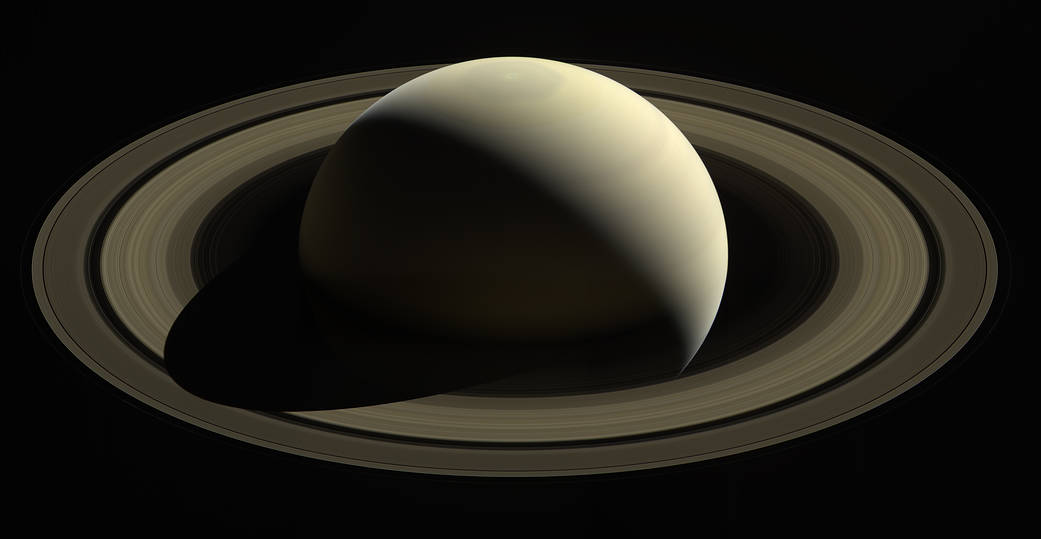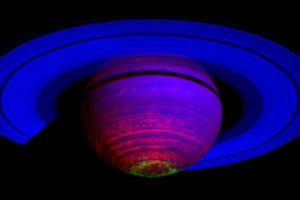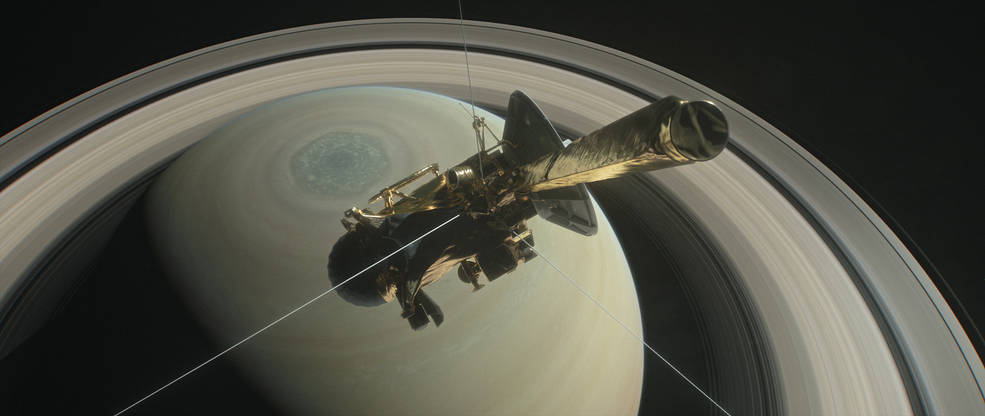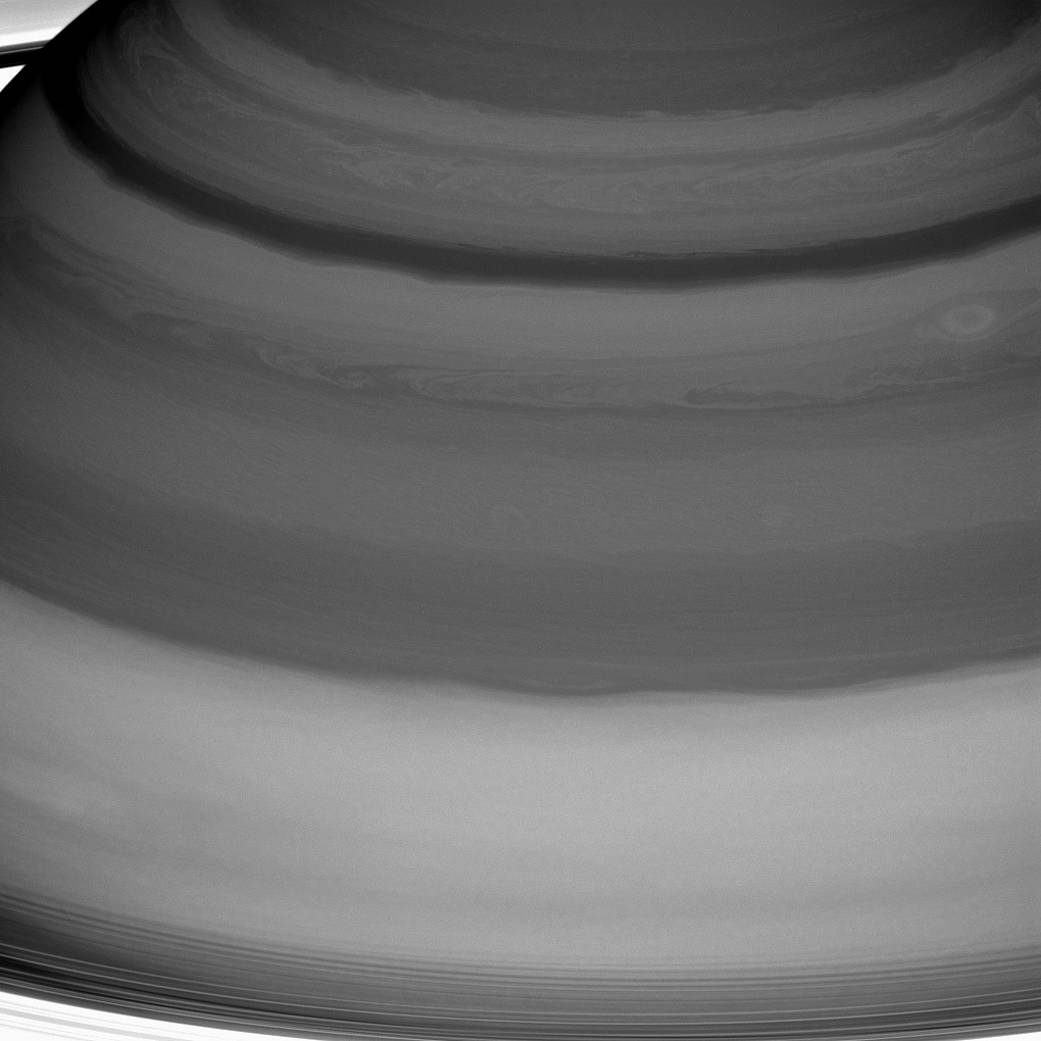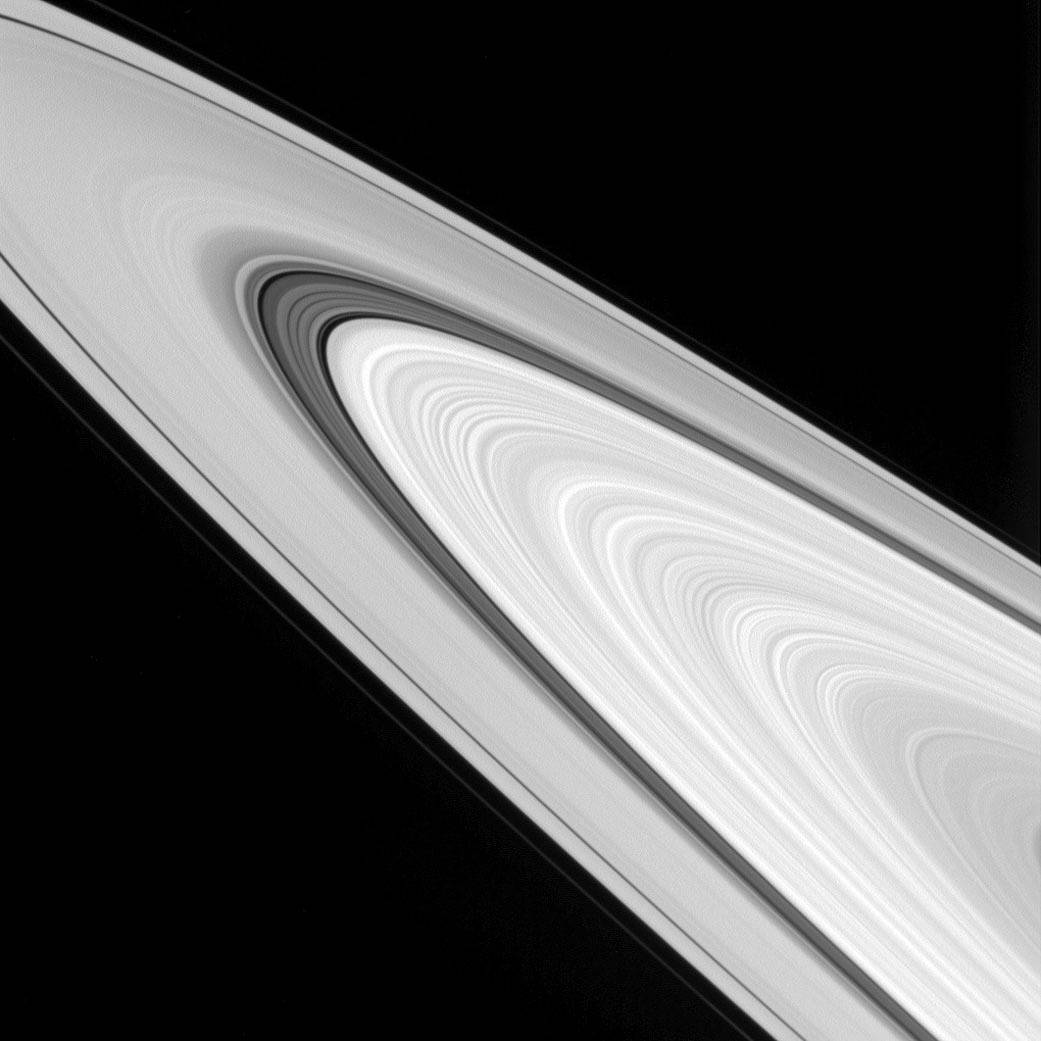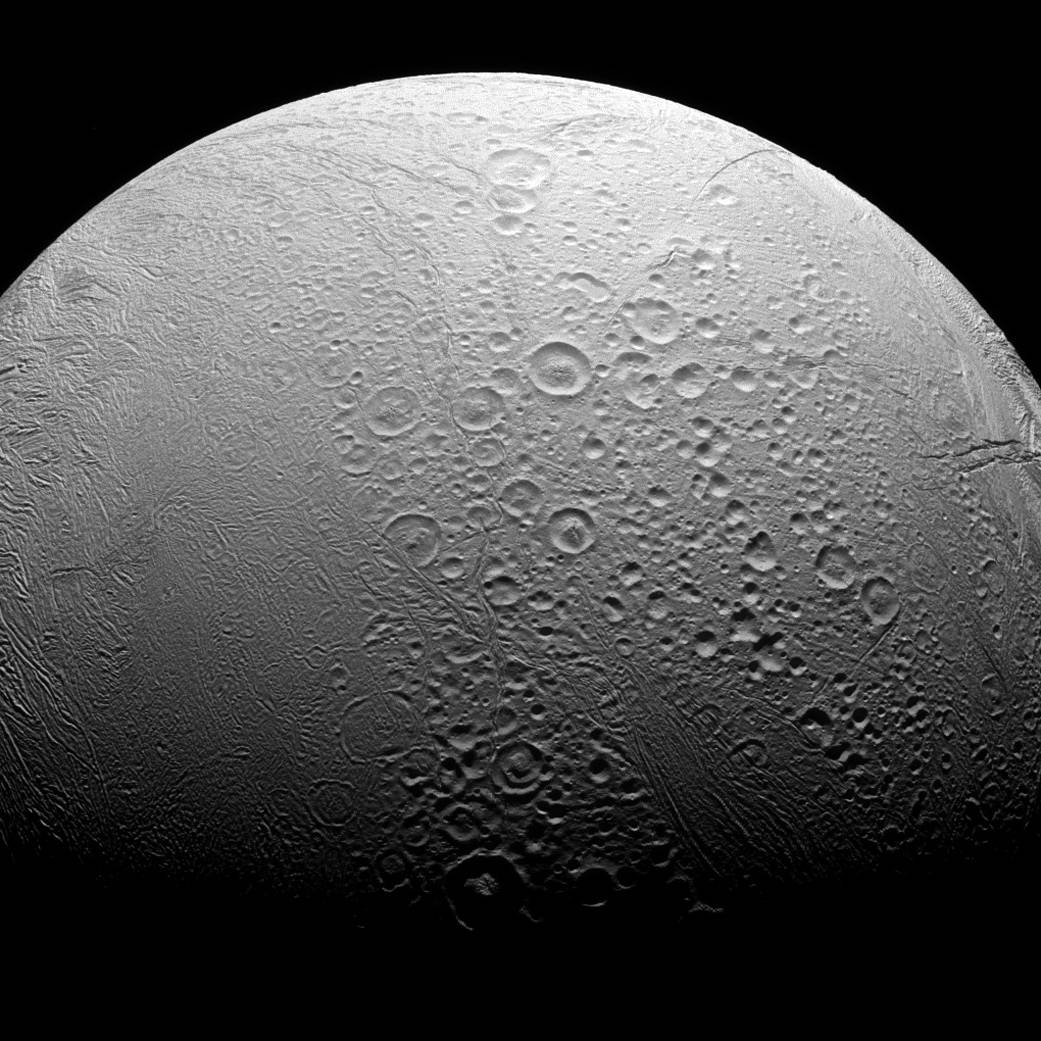「2018.01.10:「スピルカーが語る土星の謎」で英語ヒアリング特訓!」でも引用されていた土星の画像です。
これは「PIA17172: The Day the Earth Smiled」というもので太陽を背にした土星を反対側で撮影したものです。
オリジナルの画像は超高解像度で大きなものなので以下に掲載します。
PCの壁紙などにいかがでしょうか。
A brightened version with contrast and color enhanced (Figure 1)
コントラストと色を強調した明るいバージョン(図1)
A version with just the planets annotated (Figure 2)
惑星のみ注釈を付けたバージョン(図2)
An annotated version (Figure 3)
注釈付きバージョン(図3)
PIA17172: The Day the Earth Smiled
With the sun’s powerful and potentially damaging rays eclipsed by Saturn itself, Cassini’s onboard cameras were able to take advantage of this unique viewing geometry. They acquired a panoramic mosaic of the Saturn system that allows scientists to see details in the rings and throughout the system as they are backlit by the sun. This mosaic is special as it marks the third time our home planet was imaged from the outer solar system; the second time it was imaged by Cassini from Saturn’s orbit; and the first time ever that inhabitants of Earth were made aware in advance that their photo would be taken from such a great distance.
太陽の強力で様々に害を及ぼす太陽光線が土星によって覆い隠される位置関係にあったカッシーニは搭載したカメラでこの印象的画像を撮影しました。土星と土星の衛星などを含む全体をパノラマにすることができました。この合成画像から、科学者たちは土星の環の中や太陽に照らし出された衛星などの詳細を見ることを可能になります。この合成画像は、3回目となる私たちの地球を太陽系の外側方向からみた特別な画像です。土星の軌道からカッシーニが撮影したのは2回目になります。地球にいる私たちからすると、このような遥か彼方の距離から撮影されることは初めてのことです。
With both Cassini’s wide-angle and narrow-angle cameras aimed at Saturn, Cassini was able to capture 323 images in just over four hours. This final mosaic uses 141 of those wide-angle images. Images taken using the red, green and blue spectral filters of the wide-angle camera were combined and mosaicked together to create this natural-color view. A brightened version with contrast and color enhanced (Figure 1), a version with just the planets annotated (Figure 2), and an annotated version (Figure 3) are shown above.
カッシーニの広角カメラと狭角カメラの両方で土星の撮影に挑んだカッシーニは、わずか4時間で323枚の画像を撮影することができました。この最終的な合成画像は、撮影した広角画像のうちの141枚を使用しています。赤、緑、青のスペクトルフィルタを使用して撮影した広角カメラの画像を合成処理してこの自然色の画像を作成しました。コントラストと色を強調した明るいバージョン(図1)、惑星のみ注釈を付けたバージョン(図2)、注釈付きバージョン(図3)を上に示します。
This image spans about 404,880 miles (651,591 kilometers) across.
この画像は約404,880マイル(651,591キロメートル)の範囲にわたるものです。
This view looks toward the unlit side of the rings from about 17 degrees below the ring plane. Cassini was approximately 746,000 miles (1.2 million kilometers) from Saturn when the images in this mosaic were taken. Image scale on Saturn is about 45 miles (72 kilometers) per pixel.
この画像は土星の環の面の下約17度から撮影したものです。カッシーニがこの合成画像を撮影したのは、土星からおよそ746,000マイル(120万キロメートル)の地点です。画像解像度はピクセルあたり約45マイル(72キロメートル)です。
This mosaic was made from pictures taken over a span of more than four hours while the planets, moons and stars were all moving relative to Cassini. Thus, due to spacecraft motion, these objects in the locations shown here were not in these specific places over the entire duration of the imaging campaign. Note also that Venus appears far from Earth, as does Mars, because they were on the opposite side of the sun from Earth.
この合成画像は4時間以上にわたり撮影された写真から作られ、惑星、衛星、星はすべてカッシーニに対して相対的に動いていました。したがって、カッシーニの動きのために、この画像にあるこれらの物体は撮影期間の全期間にわたって特定の場所にはありませんでした。例えば金星は火星と同様に地球から離れていくように見えます。なぜなら地球からみると太陽の反対側にあるからです。

